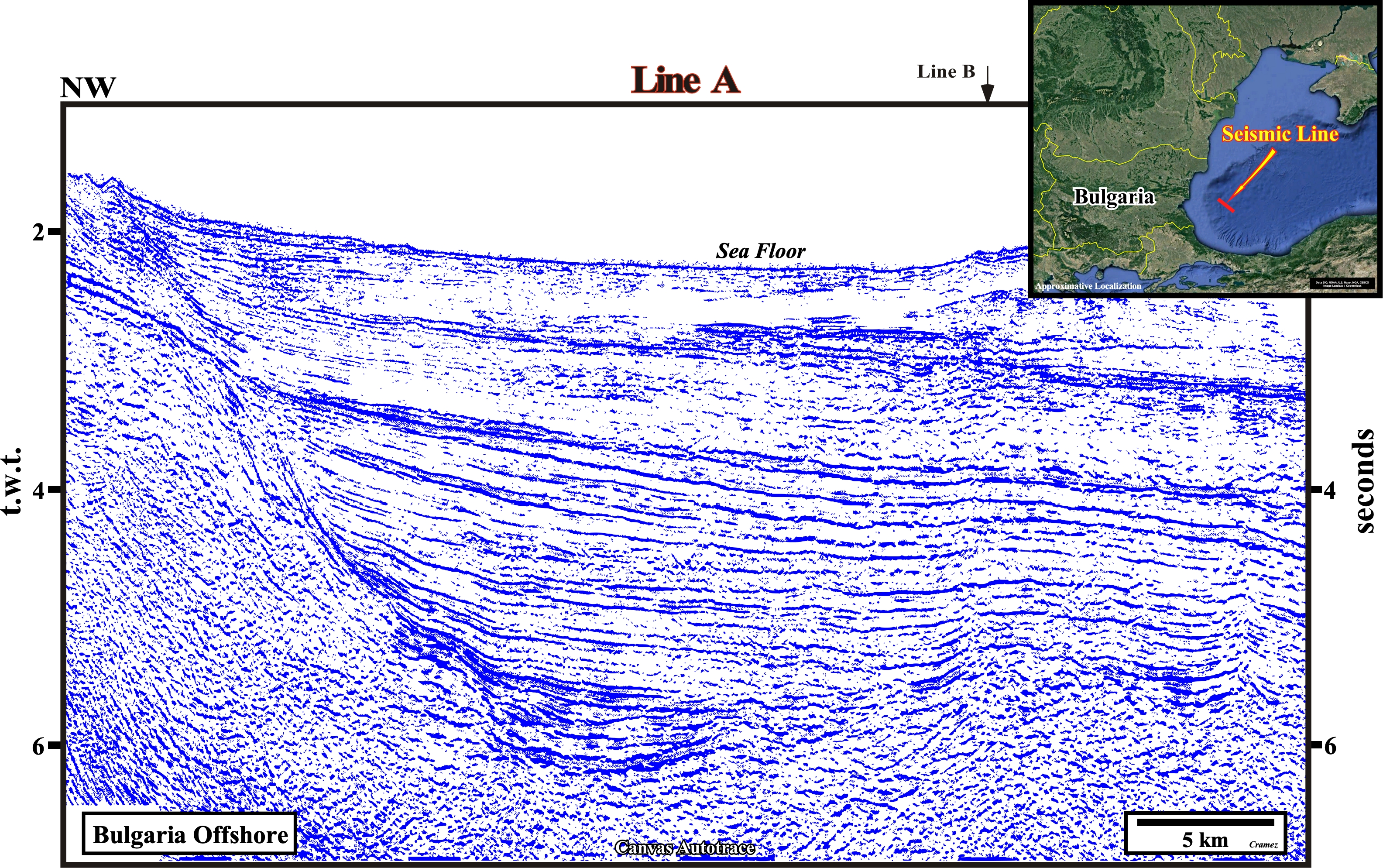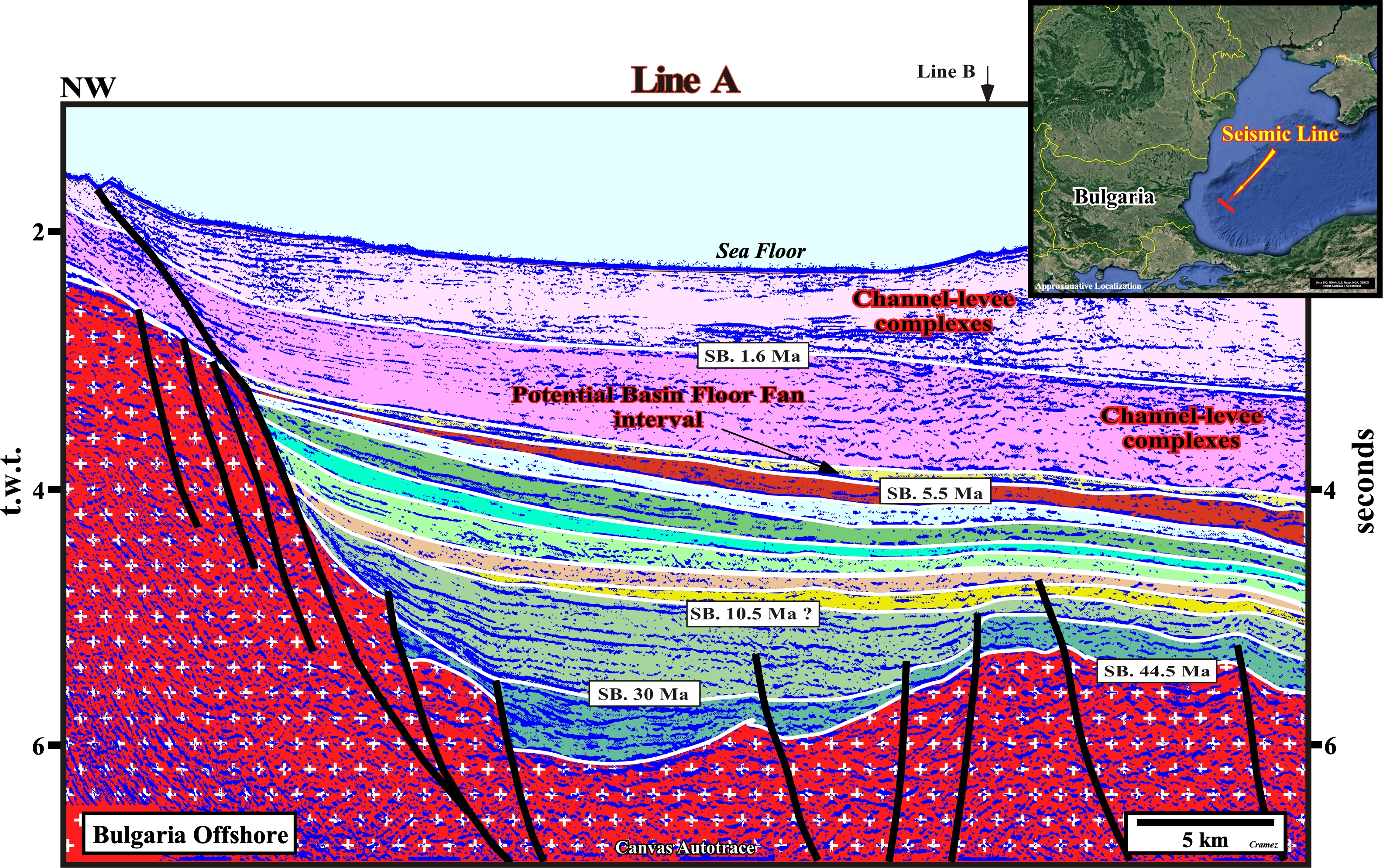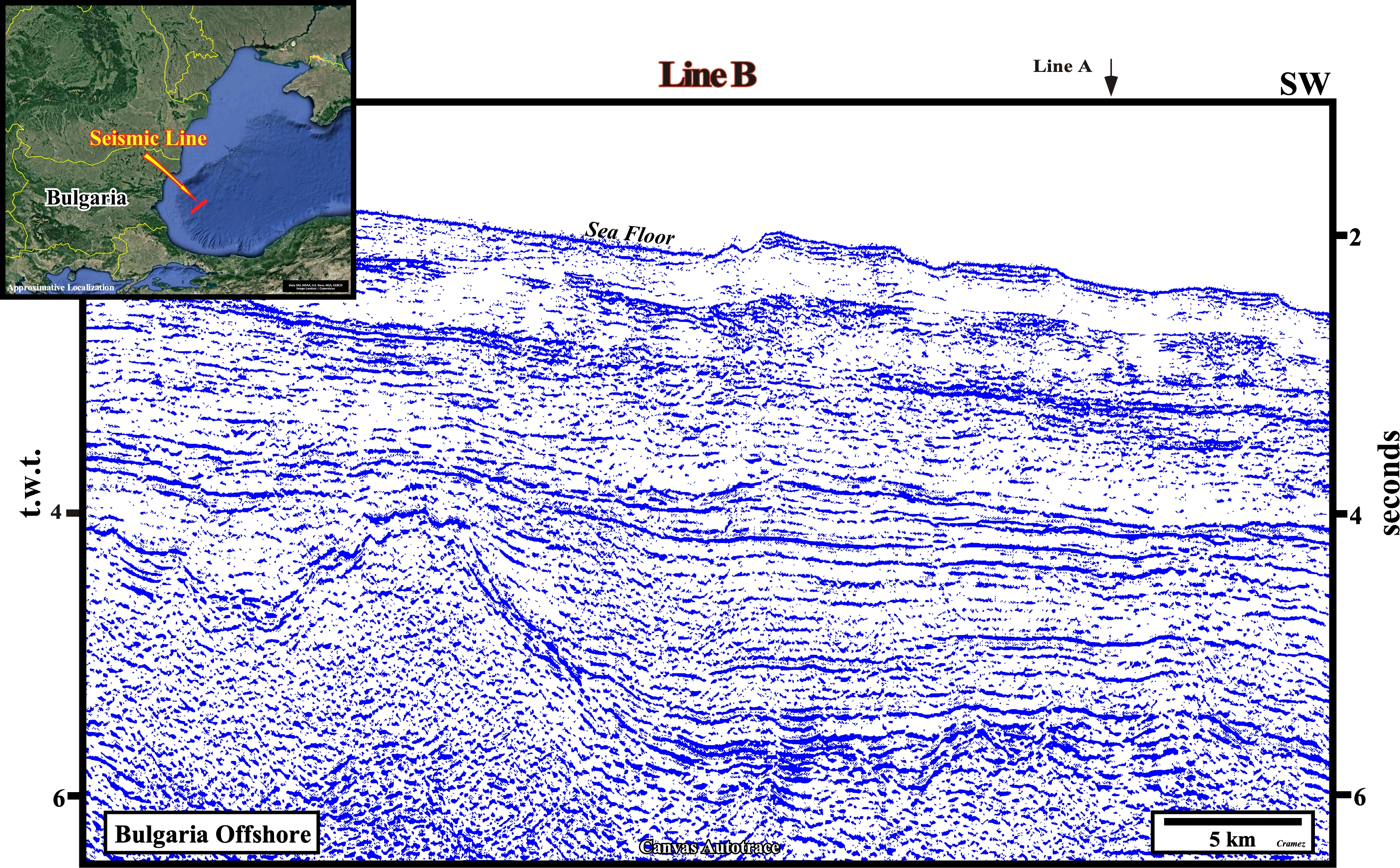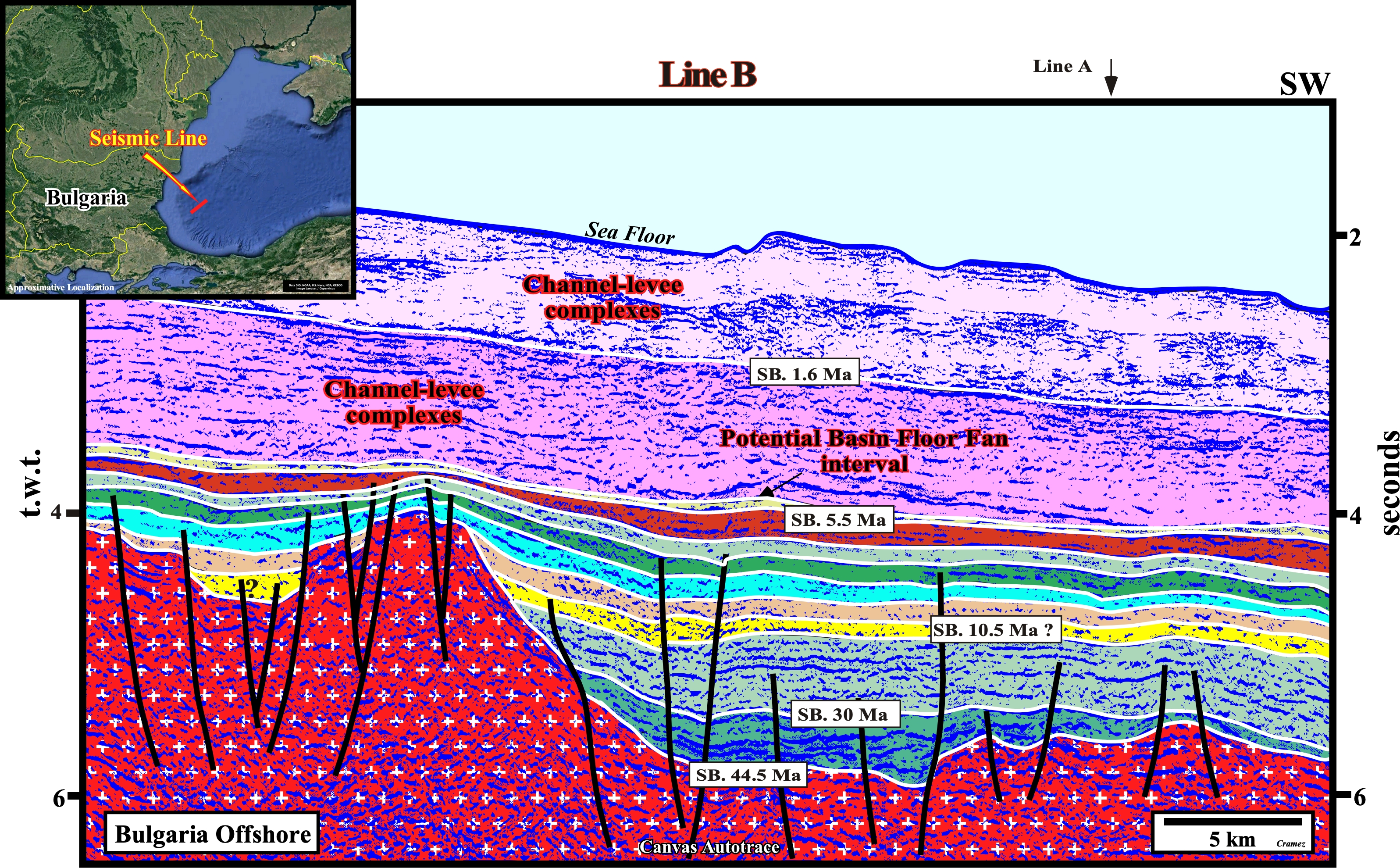

Bulgaria Offshore
Danube Deepwater




The above perpendicular Canvas autotraces of two seismic lines are quite significant, at least for the Bulgaria deep offshore. This tentative interpretation of NW-SE seismic line illustrates the attenuation of the paleo-topography associated with of the Lutetian unconformity (SB. 44.5 Ma). The internal configuration of Paleogene and Lower Neogene intervals is parallel. The Plio-Pleistocene intervals have a hummocky or mounded configuration suggesting slope fan deposits. The lower most portion of this interval, immediately above the SB. 5.5 Ma, suggests submarine basin floor fans. On the NE-SW seismic line, the geometrical relationships recognized on the previous dip line are corroborate The lower interval of the Pliocene sequence, where basin floor fans are likely, seems here to be more or less discontinuous. In fact, above the Lutetian unconformity (SB. 44.5 Ma), it is easy to recognize that: 1) A transgressive Oligocene interval with a parallel internal configuration parallel, filled a Paleogene paleo-topography lengthened by an extensional tectonic regime ; it encroached the substratum by onlapping ; a generating petroleum sub-system (Maykop) was developed within such an interval. 2) The Oligocene transgression displaced landward the depocenters creating a carbonate shelf and increasing the water depth on distal areas. 3) After an important non-depositional hiatus, the sediments associated with the terminal phase of Miocene regression finally arrived into the basin ; upward, they are bounded by the SB. 10.5 Ma, which marks an important relative sea level fall. 4) Such a relative sea level fall created lowstand geological conditions in all area: the carbonate platform was exposed and, partially, incised until the rivers found a new equilibrium profile. 5) During this period of time, a thick forestepping interval (SB. 10.5 / SB. 5.5) was deposited ; its thickness (time) is more than 1,5 seconds, in the proximal area ; landward, this interval is limited by an important normal fault, which throw illustrates the Paleogene extension. 6) The unconformity SB. 5.5 Ma, which bounds the top of this progradational interval, formed during lowstand time ; it was overlain by the sediments deposited during the Pliocene transgression creating starved conditions in the distal areas. 7) Since then and till now, a slope turbidite deposition had taken place ; large channel-levee complexes can be recognized ; the absence of lobes suggest type I turbidite depositional systems (Emiliano Mutti’s terminology). 8) The internal configuration of the Pliocene interval (SB. 5.5 - SB. 1.6 Ma) is hummocky with clear “gull-wings” reflection configuration ; the amplitude of the over-bank deposits strongly suggests a predominant shaly facies.
Send E-mails to carlos.cramez@bluewin.ch with comments and suggestions to improve this atlas.
Copyright © 2001 CCramez
Last update:
2022